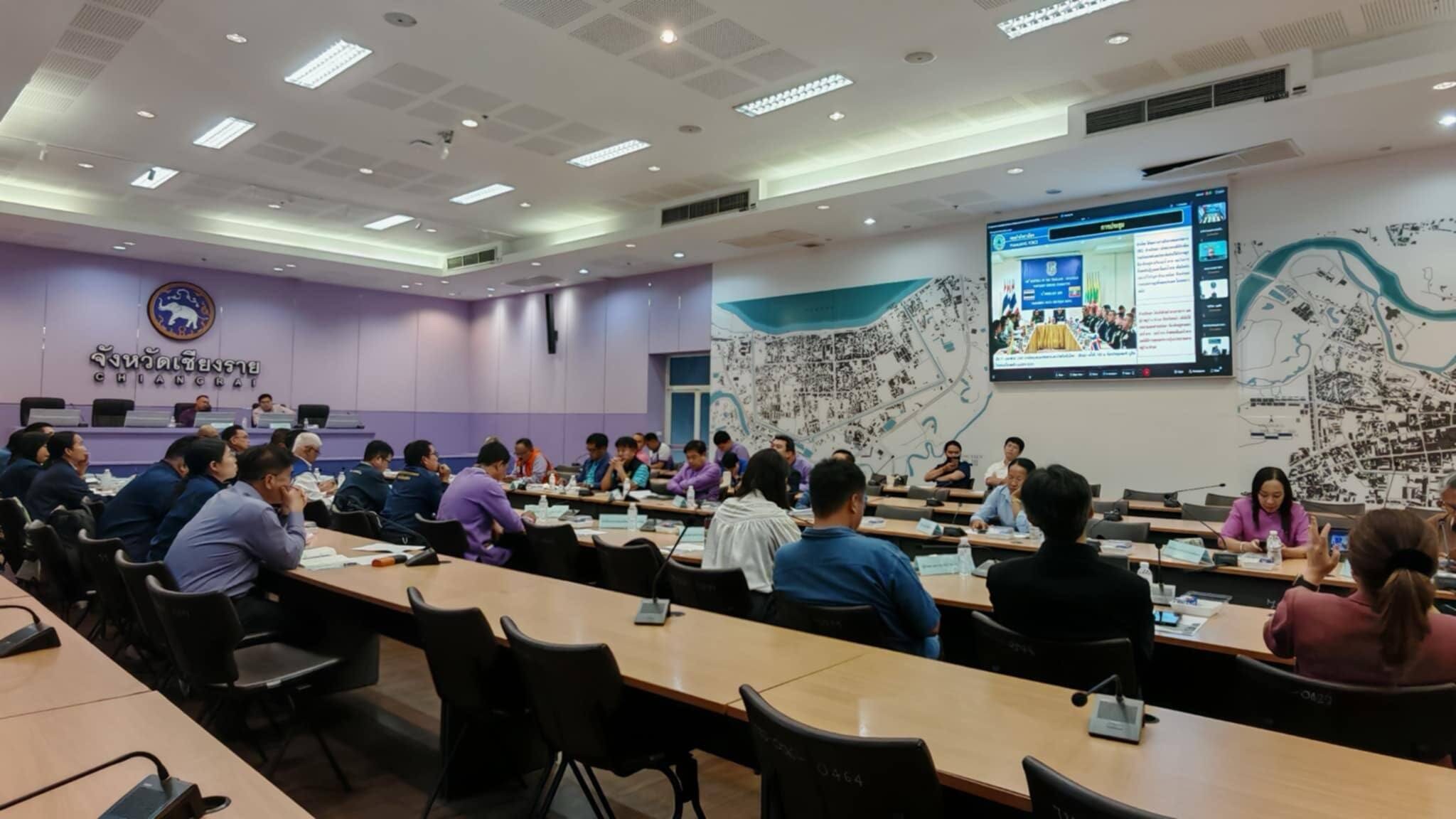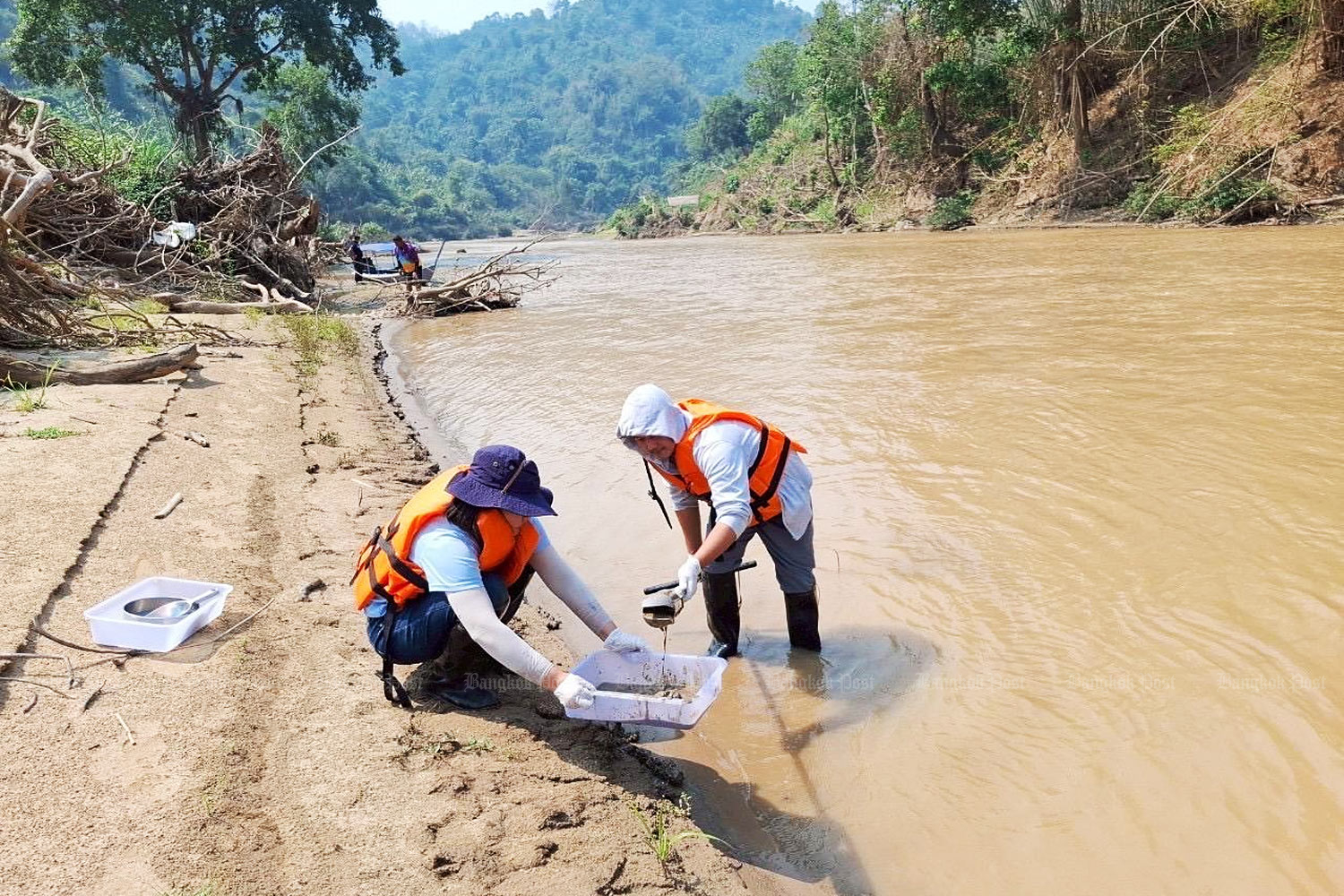On Tuesday, the first cross-border river meeting was held in Chiang Rai, which focused on plans to build a sediment-trapping barrier to tackle heavy metal contamination in the Kok and Sai rivers.
Four working groups were set up to address different parts of the issue. Researchers urged careful consideration, raising concerns about where the toxic sediment would be disposed of and warning against repeating past mistakes, such as with the Klity Creek incident.
Governor Charin Thongsuk chaired the meeting to address water quality in the upper Mekong River basin. Representatives from local government, Chiang Mai and Chiang Rai authorities, university researchers, and community networks joined the discussions.
The meeting covered several topics about the quality of water in the Kok and Sai rivers. Recent water checks showed an increase in heavy metals. The Mae Sai Waterworks collected their most recent samples on 7-8 May.
The team also discussed gathering surface water and sediment samples to get a clearer picture of heavy metal build-up in the rivers.

Sediment-Trapping Weir (Dam)
There was a detailed exchange about the proposal to build a sediment-trapping weir. Full results of all water checks will be reviewed by the working groups before any further steps are taken.
When it came to funding, local waterworks have already received 800,000 baht from the Department of Medical Sciences. The governor asked the Provincial Administrative Organisation (PAO) for further support to monitor water quality.
He also requested that the Provincial Waterworks Authority step up its testing frequency because heavy metal levels change with water flow. Clear communication is needed to reassure the public about safety.
The meeting agreed to form four working groups: one for technical and data issues; one to find the source of water quality problems; one to reduce impacts and monitor water and build a database; and one for community engagement and communication, led by the PAO president.
The legal and planning group will be led by the Director of the Regional Water Resources Office 1, and the international coordination group by the Commander of the Pha Muang Task Force.
Governor Charin said each working group would need to quickly draft action plans and budgets, particularly for urgent and short-term measures. Longer-term solutions include finding new raw water sources if upstream issues are not fixed.
A border affairs representative shared that local Thai-Myanmar border committees have already sent a second letter about heavy metal problems in the Kok and Sai rivers.
This issue will be discussed at the Thai side’s RBC meeting on 28 May in Chiang Mai, followed by the 37th Regional Border Committee meeting, and at the TBC meeting in Myanmar in August.
There will also be a high-level Thailand-Malaysia border committee meeting at the end of the month, with Thailand hosting.
Water Checks in Chiang Rai
The secretariat of the Office of the National Water Resources asked agencies with clear plans to submit them, especially if sediment traps would deliver real benefits by filtering out chemicals. Decisions are needed about funding for these weirs, both in Chiang Mai near the Myanmar border and at other points along the rivers.
Agencies also need to outline their plans for water quality checks to secure more funding. Mae Fah Luang University, which has its water testing lab, plans to request support to set up standardised water testing in the area.
Somporn Phengkham, an independent researcher and director of the Community Health Impact Assessment Platform, commented on the plan to build a sediment-trapping weir at the spot where the Kok River enters Thailand in Tha Ton, Mae Ai district.
She urged a thorough review, as the Kok River is wide and a sediment weir would function much like a dam, affecting the river’s ecosystem. Fish would no longer be able to pass as before, and the management of the water flow would need careful planning. It’s not as simple as just opening and closing a gate.
She stressed that even as a temporary fix, the project needs careful thought, especially over how to handle the large volume of sediment contaminated with heavy metals. She pointed to the Klity Creek case, where, after building a sediment weir, there was no clear plan to dispose of the waste.
At first, a private company was hired to bury the material in Saraburi, which was very expensive and faced local opposition. It was eventually moved back to Klity, but that was only a small creek. The Kok River would generate even larger amounts of toxic sediment. If there’s a major flood, temporary weirs or dams may not last.
Somporn said the best solution would be for the government to push for the closure of upstream gold mines as soon as possible, otherwise the risks will keep growing.















